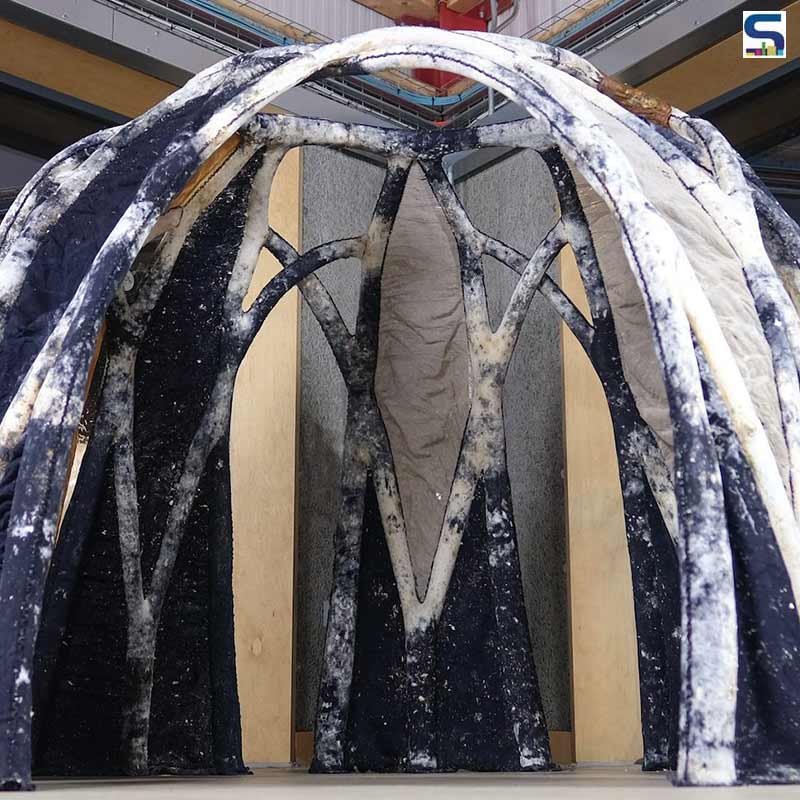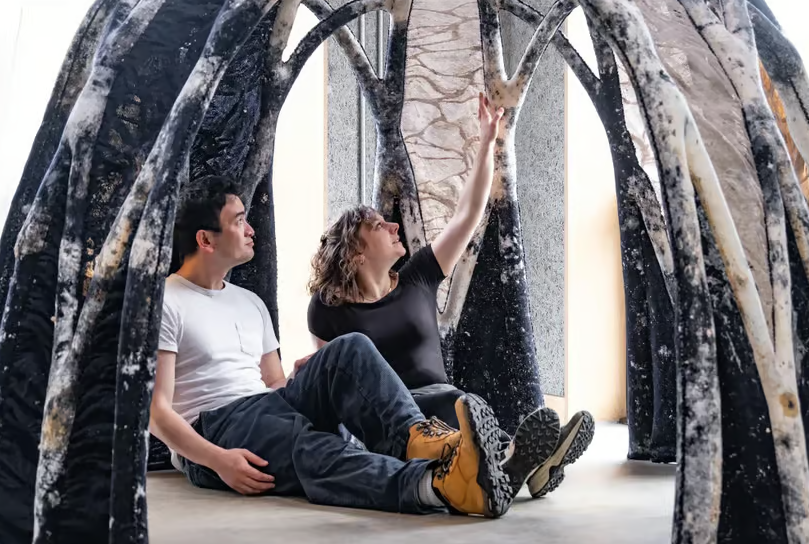
Scientists have created Mycocrete, a paste made up of a mushroom's root system, that can be used as a construction material. This composite has been improved upon by adding a knitted textile framework, granting it greater strength and flexibility than prior fungal biomaterials. Read SURFACES REPORTER (SR)’s exclusive report on this below:
When mushrooms sprout from the ground, it may be hard to imagine that beneath them lies an interconnected web of root-like threads known as hyphae, which form a collective mat called mycelium. Through proper cultivation and harvesting, this substance can be transformed into a strong material used in lieu of leather, soundproofing insulation or packing foam.
Now, Newcastle University is exploring the potential of mycocrete, a paste made from spore-grain sustenance and other elements such as paper powder, fiber clumps, water, glycerin and xanthan gum that bulk it up.
How is it made
Researchers combine mycelium spores with grains as food and material for them to grow on to create composites. This is placed in a dark, humid and warm environment, giving the mycelium the perfect conditions to bind firmly with the substrate. The mixture is then dried out before it begins producing mushrooms.
After being allowed to dry, the samples were subjected to strength tests involving tension, compression and flexion. The mycocrete samples proved to be more resilient than mycelium composites that were not grown with knitted formwork and showed superior durability. Moreover, the porous fabric enabled better access to oxygen which resulted in more consistent production as the material shrunk less than most of its counterparts when dried. With this, they created a complex freestanding dome prototype called BioKnit with no weak joints due to its flexibility.
How does it work?
The paste is injected into an oxygen-permeable knitted textile mold, and then kept in a warm, dark, and moist atmosphere. As the fungal spores develop into mycelium, the tightly clustered hyphae transform the paste into a firm three-dimensional matrix, conforming to the shape of the mold. Finally, the mycocrete structure is taken out of its growing area and allowed to dry - preventing it from forming mushrooms.

Two scientists in the BioKnit dome made from mycocrete. Image courtesy of the Hub for Biotechnology in the Built Environment
To demonstrate their experiment, researchers constructed an autonomous BioKnit dome that contained a single section of mycocrete without any joints. Testing demonstrated that this material was more robust and contracted less during drying than other similarly built mycelium structures.
A paper detailing the work has been published in Frontiers in Bioengineering and Biotechnology, conducted by a team of engineers, designers, and scientists from Newcastle University's Living Textiles Research Group.
Keep reading SURFACES REPORTER for more such articles and stories.
Join us in SOCIAL MEDIA to stay updated
SR FACEBOOK | SR LINKEDIN | SR INSTAGRAM | SR YOUTUBE
Further, Subscribe to our magazine | Sign Up for the FREE Surfaces Reporter Magazine Newsletter
Also, check out Surfaces Reporter’s encouraging, exciting and educational WEBINARS here.
You may also like to read about:
Mitsubishi Jisho Design Crafts Teahouse Pavilion using Food-Waste-Based Materials | Veneti-An
Scientists Unveil Self-Monitoring Metamaterial Concrete for Smarter Infrastructure Systems | SR Material Update
The Sweet Solution: Scientists Develop New Material to Replace Harmful Plastics | SR News Update
and more...